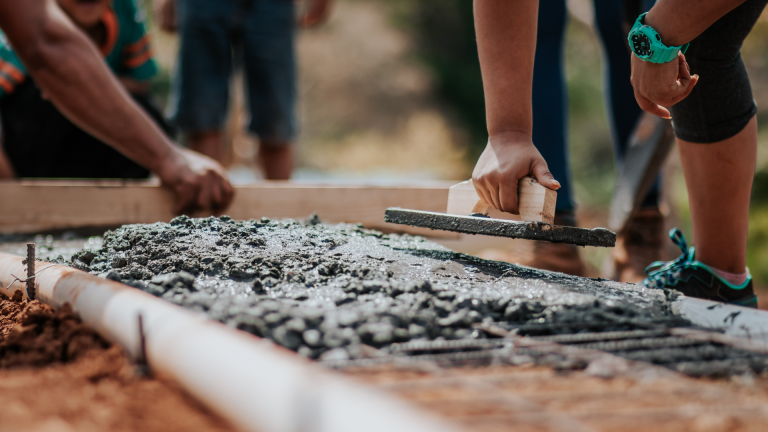How Industry Collaboration and Innovation Are Shaping The Future of Cement and Concrete
This Industrial Innovation Initiative’s July 2025 plenary brought together leaders from the cement and concrete sector to share valuable insights on their work. While recent policy shifts, like the rollback of critical clean energy tax credits and cancellation of key US Department of Energy (DOE) industrial awards, are disappointing and concerning, participants demonstrated that progress continues.
Here are a few high-level takeaways from the conversation:
Company Commitments: Companies across the sector remain committed to ambitious internal emissions reduction targets, and several speakers shared that these goals are well within reach. Through diligence and innovation, companies are advancing their goals while driving economywide emissions reductions. One speaker shared that their company is significantly reducing Scope 2 emissions, as the market and technology have evolved, making it both a cost-effective and sound business decision. Several speakers highlighted success replicating solutions across projects, underscoring the importance of deploying technology at scale to accelerate commercialization.
Collaboration & Shared Risk: Cement and concrete companies are increasingly making capital investments with their emissions targets in mind. However, companies are often expected to absorb the full risk and cost of these investments. This can be a significant barrier, especially as confidence in consistent federal support wanes. There is also frequently limited visibility into, or understanding of, the benefits of these investments to stakeholders along the whole supply chain. Speakers emphasized the importance of continuing to lean into industry-wide collaboration to share risk and reward. As one speaker noted, genuine collaboration is happening. This is encouraging, and it is more efficient and accelerates the impact compared to each company going about it independently.
Market Innovation: Cement and concrete are commodity products, making it difficult to secure a green premium, especially from buyers without explicit carbon goals. However, there is an opportunity to stack carbon savings along the supply chain. Developing voluntary carbon markets and book and claims systems offer a pathway for producers to monetize carbon savings. As one speaker shared, companies can purchase environmental attribute certificates (EACs), which function similarly to renewable energy credits (RECs), to access flexible solutions. These mechanisms help create a virtuous cycle, enabling concrete producers to verify their use of lower-carbon cement and generate revenue from the associated carbon credits.
Federal Opportunities: The Surface Transportation Reauthorization process is underway and presents a timely opportunity to elevate the benefits of blended and low-carbon cements. Permitting reform also presents a pathway to regulatory changes that could enable greater use of alternative fuels in cement production. I3‘s nonpartisan, consensus-based voice is uniquely positioned to support efforts like these to help shape industrial policy and programs while advancing a competitive US economy, thriving livelihoods for workers, a safe and healthy environment, and a stable climate.
Thanks to our I3 members and participant speakers for sharing these valuable insights. Want to learn more about some of the key organizations shaping the sector?
Check out some of the recent work below:
- American Cement Association: New industry report predicts US will need 1 million tons of cement for AI infrastructure by 2028
- Amrize (previously Holcim US): Amrize and Meto partner on AI-optimized concrete
- Cemex: Cemex Knoxville cement plant chosen for DOE-funded carbon capture, removal, and conversion test center
- CarbonCure Technologies: CarbonCure achieves milestone 500,000 metric tons of carbon dioxide savings
- Heidelberg Materials: World premiere: CCS cement facility opens in Norway
Contact us for more information about the Industrial Innovation Initiative and how you can join this growing effort.

